Scotland’s shipbuilding industry has received a huge boost after Norway confirmed it will buy British Type 26 frigates in a £10 billion deal, with the vessels to be built on the Clyde.
The agreement secures around 2,000 jobs at BAE Systems’ Glasgow shipyards until the late 2030s and sustains a further 2,000 roles across the UK supply chain. It is also expected to support more than 100 Scottish businesses, including 54 small and medium enterprises.
Scottish Secretary Ian Murray said the announcement highlighted both the industrial and strategic importance of the decision. “Norway’s decision to choose Scottish-built frigates demonstrates the tremendous success of our shipbuilding industry and showcases the world-class skills and expertise of our workforce on the Clyde. This contract is another ‘defence dividend’ for Scotland and supports thousands of jobs and reinforces Scotland’s vital contribution to both UK prosperity and international security. The deal demonstrates that when we back Scottish industry, it delivers for communities, workers, and our allies.”
The Royal Norwegian Navy will receive at least five frigates, adding to the eight already on order for the Royal Navy, creating a combined fleet of 13 advanced anti-submarine warfare ships operating jointly in northern waters. The move deepens long-standing UK–Norwegian cooperation in the North Atlantic and strengthens NATO’s ability to counter growing Russian submarine activity.
Prime Minister Keir Starmer said the deal was an example of government policy delivering at home and abroad. “This £10 billion deal is what our Plan for Change is about – creating jobs, driving growth and protecting national security for working people.”
Defence Secretary John Healey underlined the wider alliance impact, describing it as a deepening of the UK–Norway partnership. “With Norway, we will train, operate, deter, and – if necessary – fight together. Our navies will work as one, leading the way in NATO, with this deal putting more world-class warships in the North Atlantic to hunt Russian submarines, protect our critical infrastructure, and keep both our nations secure.”
For Scotland, the industrial implications are clear. Alongside the jobs secured on the Clyde, Ferguson Marine at Port Glasgow has already joined the Type 26 supply chain, fabricating modules for HMS Birmingham. Across the country, suppliers from electronics to steel are expected to benefit as the work ramps up.
The frigates themselves are designed specifically for anti-submarine warfare, with stealth, sensors and endurance tailored to the North Atlantic environment. By joining the Type 26 programme, Norway becomes the fourth nation to adopt the design after the UK, Australia and Canada, creating a global user base of more than 30 ships.
The decision comes ahead of a new bilateral defence agreement between London and Oslo that will further formalise cooperation, linking industry, training and operations.



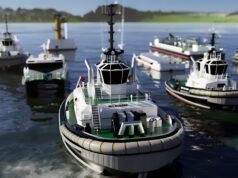
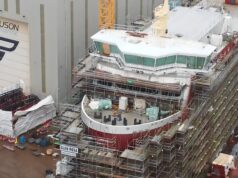

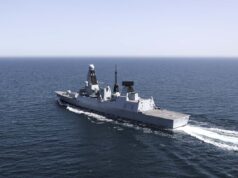


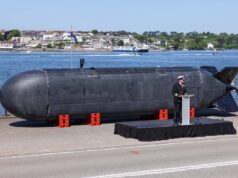
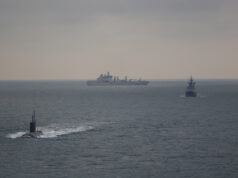
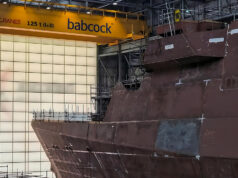

Scitish support for it’s shipbuilding industry. Whatever next.
All very nice for Starmer to make a claim about “plan for change” but Norway started this process back in 2020/21. I’m more interested to see what is coming under the industrial defence announcement this autumn.
starmer doesn’t have plans. just U turns.
Not holding my breath Andy…
He would sure have taken flak though if the Norwegians had gone with someone else. Ensuring deal closure as opposed to screwing it up is still an achievement of sorts.
It will be to spend future money in the next terms.
Sadly I’m of the view that what will be announced will be more short term cuts with the cress and dressing of future unfunded orders that a future government may well be forced to cut.
I might get an improvement in rural broadband under new defence plans. Perhaps even some pot holes filled in.
I think it is fair to say that Starmer has brought has brought strategy and long term consistency back into Government, but we are reckoning on a full decade to recover in areas that were previously gutted, like local government and policing.
We are only 12 months in, so although a lot of legislation is now on the books, it will be at least another 1-2 years before we see many outcomes.
Starmer/strategy. Not two words that go naturally together…any more than Sunak/sense.
I think that it is concealed by the froth and the fury, and by the country being wrecked in almost every area, and there being little money to invest.
But there have been a lot of things that will bring benefit over several years (say 3 years to 10 years). We have the start of consistent reform, and small funding increases for some, in police, local government, planning, defence for example. Plus things around employment conditions, and rental. And addressing various items that have just been ignored – the contaminated blood issue for one.
In Defence we have seen a very good non-political Defence Review, and early moves around procurement and recruitment and forces’ housing, and following through on various things the previous Government had done better in recent years (naval continuous build), actual increases in defence budget – again small, and small long-term things like building on cadet force increases which again the Torie shad done well at.
My view is that Mr Starmer has been timid and failed to fight the politics on his own turf but allowed Farage etc to set the agenda, but I think that behind the froth there has been quite a lot.
Norway decided it was going to buy frigates, with around 4-5 different frigates in the running, not that it was going to buy UK frigates. Simply put Norway was looking for a full love affair not just 5 frigates ( it was the same helicopters, support and shared training ect) and the Starmer government pulled off the love affair others did not do as well.. we blame the Starmer government for its bad moves we must also praise it for its good moves and this was a very very good move. The truth is however poor his domestic appeal seems to be with the British public on the international stage other nations very much like him, where as the previous governments were not that trusted internationally..so I could not see Sunak pulling off a love in and getting a 10billion order and defence treaty with Norway.
Well said, credit where credit is due. NATO gets the 13 T26 that the UK couldn’t afford alone; BAE and Scotland get an order backlog stretching into the 1930s, justification of the decisions taken at the time of the River 2 apprenticeships, affirmation of govt industrial strategy and post Brexit UK diplomacy; great affirmation also of UK technologies – RR MT30, Artisan, CAMM and hopefully AW101 orders for Yeovil. I’m tempted to say that this order is a well deserved turning point for the country.
Yes it’s a lot of tec orders for a lot of companies. If the Merlin orders follow as well ( answer 10 billion is a lot of cash) that keeps that production line ticking along as well.
I think it’s far to say the UK naval building sector is seeing a renaissance, all that is needed now are some more domestic orders on the T31 line to keep that going and then as soon as someone wants a frigate, flog them one of the production line or even a just worked up ( pre registered) as new ship.. then order a replacement…. That’s how the Italians do it and they keep on flogging frigates.
Paul.P NATO gets 28 T26s you seem to have forgotten the 15 for Canada.
Quite right. I stand corrected.
Hear, hear. Not just Norway, but the JEF as a whole has become a critical area of NATO for us. Increasing the strength of those links are as important to us as linking with France, Germany or Italy. On day one of a war, possibly more important. Our alliances need to be nurtured beyond Five Eyes. It’s why we also need to be in South East Asia. So difficult to cover the bases when we are so diminished, but we have to try.
Yet we got GCAP and AUKUS under the last Government. Plus Australia, Canada, Poland buying UK frigate designs, go figure!. I’d say the success on this order is more to do with a good design and the investment in the build sheds(finally by BAe). UK shipbuilding is enjoying a more buoyant time but that the product of along term strategy not something that was achieved in the 14 months of this government.
Lastly we government might even U turn on this after all it does have so previous in that regard 🙂
I think you’ll find that I never mentioned the T26. I said “process”. Either way the deals for Australia and Canada were agreed some years ago, as was the frigate buy from Poland so Starmers input ???
This is brilliant news! Fantastic for Scottish jobs, am sure loads more up and down the country and reduces boom and bust cycles. Plus of course all the military advantages. 4 countries now on board with this ship.
Ony downside is Labour will try and get credit and say they support business, when lots of other businesses have been going to the wall due to their policies.
Good news but in my opinion we need more type 26 ( at least 2) and we need to accelerate the Type 83. We don’t have the capacity
You are 100% right about that Michael.
Of course we have the capacity. The UK used to build loads of ships across the country.
It did that by building the facilities and training the people.
If we did it once it can be done again.
Both take time and investment. Neither of which we have in abundance .
In that case let’s do nothing, what a much better idea you should really be running the country with such far sighted vision.
Charming answer, for business to invest they need to see a return on their money. Which they do not seem keen to do as the improvements tin Glasgow and Barrow have all been principally government funded,
The investment would be for the commercial companies which is what they do.
Clearly the Government might wish to contribute to both skills and assets in order to ensure they were available regardless of who wins the contracts. However BAE must seriously be considering wishing to make that investment on the back of the Norway bid let alone further bids.
All the improvements so far to both Glasgow and Barrow have been BAE themselves but largely government.
Any contribution by Government will undoubtably come with strings. If BAE are commercially benefitting from assets partially provided by HMG they will undoubtably be putting money back into the treasury.
Also BAE will have had the conversation with Norway as to how they are going to build the ships in a timely fashion without interfering with current or future orders by other customers. The T26 seems to be a potential earner for BAE they would be daft not to invest.
It seems to be the no1 surface sub hunter of choice.
We still need to build more of them foot our own navy,
Absolutely true. I would be very surprised if BAE had not needed to provide a viable plan for ramping up production before the Norway deal would be acceptable for either countries. A batch (or two) more T26s maybe needed especially if the trials go well for the UK and production of ships in the UK for foreign paying Governments is too good to ignore.
Building ships in sheds is the future it seems.
In the time of the battleship diffrent yards used to build ships to a design, so who knows the T83 could be built by both Babcock and BAE. The major issue is that the MoD or Admiralty no longer has a deprtment of naval constrution where navel designers submitted the design according to naval requrirements then these are sold to the builders. So as an example the King GeorgeV class battleship built in Cammel Laird, Fairfield, John Brown, Swan Hunte and Vickers, but designed by the Admiralty
a few more ships and Norwegian Navy will be larger than RN!
8 is more than 5.
Hardly
Hopefully more work blocks from Cammel laird. This with the addtional work Babcock is doing with Sweden on their new class of ship is great. Australia and Portugal are also taking notes on the 6th gen programs.
This is really great news but the details of the deal will be interesting. There was talk that the Norwegian Navy wanted their ships quickly which might require the RN to give up some of their earlier build slots as part of the deal. Although the article says the deal will secure jobs out to the late 2030’s it doesn’t say anything about the order in which ships will be delivered, which will be the interesting piece of infomation.
It would also be good if the RN could have 3 or 4 T26 tagged onto the end of the production run. I believe that there may still be capacity to increase the production rate of these ships. For example, BAE System’s original plan was to build the frigate factory at Scotstoun rather than Govan so is there still room to construct a second build hall at Scotstoun? Given the need to get on with the T83, speeding up the T26 would be a helpful move…
Cheers CR
They’re not going to make another hall for this. We’re not ordering enough ships
True enough but I was suggesting that we needed to order more T26 and that the T83 would need to be built reasonably sharpish as well given the threat environment we currently face.
Of course, our politicians seems to be issued with rose tinted glass when they enter Government so nothing could possibly go wrong on their watch…
We desperately need a much bigger navy, especially as the USN is still shrinking and struggling to get stuff built. We seem to have got back into building ships and will soon be taking delivery of two or so frigates per year. Quite a turn around from no frigates in over 30 years by the time the first of the newbies arrives.
I believe that given we are an island nation with a strong maritime history we should focus on NATO’s maritime flank. Also because of our geographic position we are a maritime frontline state and need to realise that and act accordingly. We should also remember that Russia and China are the main players in the CRINK Axis and China needs Russia to keep Europe focused on Ukraine and its own defences while it prepares to retake Taiwan. As such I think China will continue to support Russia to keep it in the field. Long story short and from the CRINK Axis perspective Russia has to win in Ukraine and China may end up getting far more active in its support which could easily involve basing ships in the Kola Inlet. They are after all building what will likely become the world’s largest navy in the not too distant future.
So yeh, sure as eggs is eggs, we need a much bigger navy.
Cheers CR
We have no crystal ball. We have increasing defence spending across NATO which shows no sign of abating. Another build hall or two would be an interesting gamble for BAE. Indeed the cost of new build facilities might be built into the price with Norway. Also will other countries want to let the UK build their ships especially if we are letting them build kit for us.
It is not a great business model for BAE if they are not seen to have capacity for foreign or domestic sales.
There might be a fit out hall built?
Hopefully they can have 3 assembly lines. That would increase production to every 9 months.
Also with current planes ship 8 starts end of 2027 and 5.5 years build means it’s in service 2032. 3 years ahead of current schedule
Obviously this is an excellent news story and places the type 26 at the forefront of NATOs frigate force. I’m surprised £10 billion will only purchase 5 or more vessels. I’d have hoped Norway could get 7+ ships for that price unless they are significantly upgrading the type 26 like the Aussies are doing into a mini AEGIS cruiser?
The RN according to SDSR is supposed to be going back upto at least 25 frigates and destroyers….yet no additional orders placed. We are missing “at least” 6 vessels. I’d like to see two more type 26s and at least 4 Type 32s at least (based on type 31 hull and machinery)
I suspect that if the T26 performs well (and the T31 for that matter) there will be a temptation to order more for various roles. The T31 is relatively cheap and it might be interesting to see how flexible the T26 is for other roles.
T31 is relatively cheap until you quieten it, fit a sonar tail and a full large VLS.
Then allow for inflation and wages, steel blowouts.
Then it is getting a long way from a cheap £250m frigate at what point do you go full fat for the £850m frigate that is T26?
That said a T26 doesn’t have that big a VLS anyway.
I suppose the question is what is Hi and what is Lo in a Hi-Lo mix.
Is it price or capability dictated or is it the potentially upgradable capability? In the case of T31 there is masses of upgrade potential.
Sonar tails: Not needed on the T31 – that’s what the T26 is for
VLS: If they come out with only 12 VLS cells, yes that’s really low, however likely OK for the tasks they are likely to be given. However yes, they really should just have been given the 32 Mk41
Type 26: 48 CAMM + 24 Mk 41 (72 total) is a decent fit-out. That’s closer to destroyer territory really.
Yes it’s a lot more than most ASW frigates, the only real limitation is the range of CAMM.. but hopefully duel packing CAMM MR or ER in MK41 silos is an easy job.. six-12 longer range AAW missiles would round them off, their sensors can work with CAMM mR or ER and has the range.
Hi SB,
With regards to upgrade potential warning time would be a key consideration. Dropping in extra VLS and bolting NSM to the deck can be done in weeks provided the kit it ready to go onto the ship. PODS could allow some interesting extra capability to be put on board in a few hours if they can make them truly plug and play. However, it seems that the RN has a storage and handling problem when it comes to PODS, i.e. they apparently filled up the space they were allocated in the car park! As such they are struggling to bring the concept forward. So the cost of the ships Hi or Lo might not be the only thing the navy needs to think about. More space and infrastructure ashore appears to be an issue as well.
I also liked Babcock’s T32 proposal, basically a T31 with a Merlin capable flight deck (in lieu of the Chinook sized version) and a much bigger mission bay that linked into the hangar if I remember rightly. I would love to see them just scrap the T32 to avoid the new project status and all the extra checks and hoops to jump through and simply order a modified T31… 5 more T31 Block 2 and would be a great addition to the fleet especially if they can sort out the support infrastructure for the PODS.
Nevertheless, two new frigate classes advancing towards commissioning..! It’s getting quite exciting really 🙂
Cheers CR
To be honest the flight deck being large is useful for a drone future anyway so why shorten it. The T31 is a very competent hull with lots of space, so I agree just keep knocking them out, you could even see if you can sell them directly from the production slots..when nations want a mid range frigate they want it next year not in 6 years.
IIRC the T32 Babcock proposal involves lengthening the T31 hull and cutting a slipway. Before we do that, or build a whole new class of ‘strike frigates’ I would like to see what is proposed, beyond Mk41, for the T31 capability insertion. For example, a full width mission bay, the ability to launch something bigger than a rhib, space for 2 Merlins, a lift up to the flight deck, side door access for vehicles could make the T31 quite a capable RM raiding ship. How much of this can be done within the existing hull?
To be honest the T31 does not need a blowout it could be rounded out by:
1) giving it a hull sonar, so it can support sanitising areas
2) give it 24 CAMM missiles
3) give it 8 NSMs
Essentially that would give you a very good mid range GP frigate.
“protecting national security for working people”
Eh?
Building these 5 ships will employ people
The syntax is a disaster
Full stop?
Excellent news. A very capable ship will soon be in the hands of two very capable navies with others joining. George – do we have the S.N.P.\s views on this development or are some sticking to their previous claims ‘none would be built’ in Scotland? This great news whatever, for the teams and the future for Scottish ship building.
Ah, you see that in SNP maths, which has taken over from SMP maths, 13 = 0.
That also holds for camper vans where ‘n’ is greater than 1 it actually reverts to zero – this is known Sturgeon’s proof.
You make it look so simple …
This is welcome news in many ways however it won’t grow our own navy and it won’t keep Rosyth and Belfast open. The only other semi confirmed program was T83 which will be built by BAE and MRSS will only keep one other yard open.
I hope we see a T32 build by Babcock based on the T31 however I seriously doubt it now. One of the three yards will close by 2030.
Let’s hope Lord Robo is right about drones drones drones and firing missiles off the deck of the Queen Elizabeth, no need for more frigates lads don’t worry 😀
@Jim it means we have secure indigenous ship building and training.
Pretty sure the govt’s industrial strategy will keep Babcock, Navantia and A&P busy. Warship building and defence in general will be used to generate manufacturing jobs, solidify the Union and buy votes at the next election. Using the same logic I would bet on Merthyr Tydfil making an Ares based IFV. I can also see us assembling Turkish army vehicles as a quid pro quo for their Typhoon order.
Anyone know if this included the proposed Merlin order too?
Not announced, but it’s a pretty good sign.
Have I missed something – when will the first delivery to Norway take place – and when will the rest follow? It all seems very open ended to me.
Indeed William-surely they will have to up the build pace. If these are tagged onto the end of the run, by the time the Norwegians get them they will be obsolete!
BAE have made it clear that with a full order book and proper in year cash they can move the schedule to 1 per year commissioned and a 66 month build time. The slow timeframe has alway been about treasury money trickling and not about how quickly you can build a ship.
Norway will get hull 3-4 which is less of an issue than you would think due to the speeding up of production and how slow the first in class is to commission.. essentially the RN is looking at having to commission a lot of frigates in a very short space of time 2-3 type 26s and 2-3 type 31s all commissioning in the 28-30 timeframe..so losing one will probably be a bit of a relief planning wise and it will only delay hull 4 for a short time as BAE are saying Birmingham is almost 66 months and Sheffield and Newcastle will be 66 month build times.. so that’s Birmingham and sheffield delivery for 2030 Newcastle 31, Edinburgh 32 and London 33…
So Norway could have one in 29 and one in 30 and the RN could still have 3 by 2030…
Essentially they are now saying they can build these ships as fast as anyone. Remember they were essentially they were taking 9-11 years to build each ship to spread the cost and work… now they have the money and work..
Good Morning Jonathan. Thank you as always for the right info! Some good news at last for the British shipbuilding industry and the Type 26 in general.
Regards from Durban-waiting for our rainy season to commence!
When are they going to get rid of those bloody mushrooms.
Great news. Norway want the first one in 2029 so they must have been promised one already under construction. Perhaps Belfast, but more likely Birmingham?
I hope we can accelerate the T31 program and order more, as the T26 will inevitably be delayed in RN service. Not ideal, but the Norwegian ships will be carrying out the same tasks as ours would in the North Sea and Arctic. I just hope that a few tailed T23s can be stretched out long enough.
Great news but many will be thinking…, first frigate to Norway in 2029, will that leave RN down on numbers. Of course a London/Oslo deal of partnering would paper over those cracks by saying Norwegian hulls could protect our waters to. UK not shelling out a billion or 2 on a new T26s over the next 5-6 years would be music to Reeves’s ears so there’s a financial motivation. And by 2030 Ukraine war and Russian aggression could be a memory and we could be tempted to cut our T26 numbers.
I am become a bit worried. It looks like the Norwegians and RN are thinking of a combined 13 T26s to protect the Northern seas, all well and good. It is what they are designed for. Now my concern, the UK government is also thinking two T45s and 3 T26s for carrier escort. We have only 8 T26s if in times of conflict that means both carriers might be at sea meaning 6 T26s. with one or two in short and or long refit that means we have nothing for the northern seas. Do you see my concern.
The Express today are predicting up to 7 new T31 orders from Denmark and Sweden.
Cant help but think the RNs orders are going to be delayed to accommodate all these Scandinavian orders.